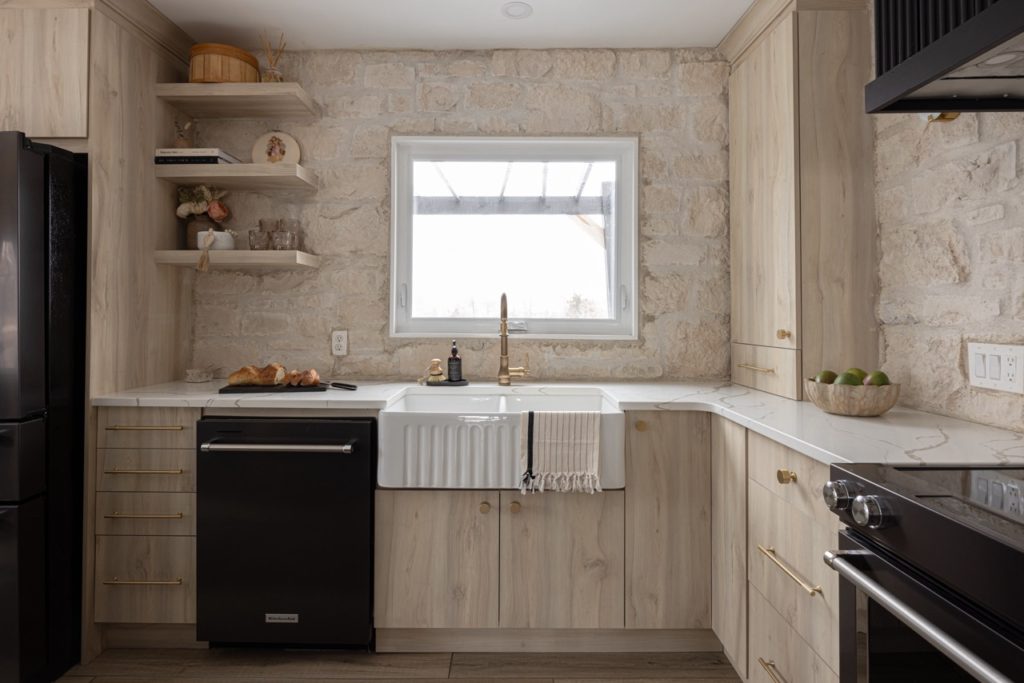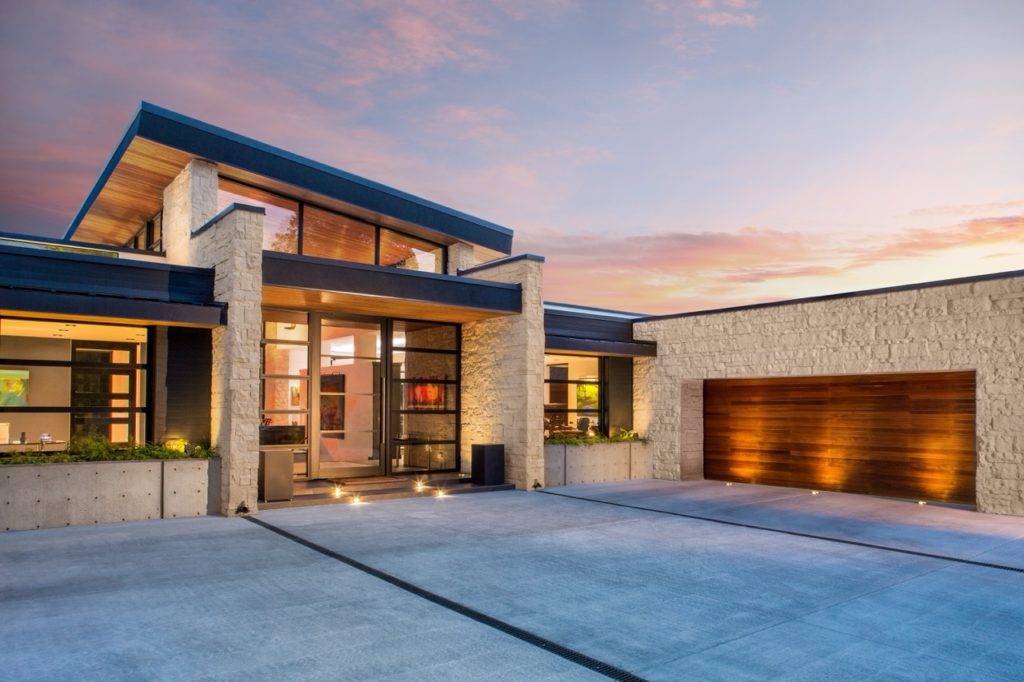Managing Project Site Relationships
Words: Isa Stein
Sponsored By: Eldorado Stone

Next to the design/build team’s relationship with the client, the dynamic between architects and project foremen, as well as the rest of the contracting team, is the most important one on any job site. While there is plenty of guidance out there for business and homeowners on “how to hire a contractor” and “how to hire an architect,” one often overlooked component of a successful project is the relationship between the construction and the architectural teams.
Oftentimes, clients opt to engage architects and builders in isolation, neglecting the potential synergy that arises from their collaboration as an integrated team. This oversight can inadvertently lead to unfavorable outcomes. Regardless of whether you wield influence in selecting your project partners—an ideal scenario—or if the partnership stems from your client's initiation, the first order of business once you’re ready to get to work is to establish a strong collaborative foundation. When it comes to fulfilling your client’s objectives and aspirations, you will only be as effective as your project-specific alliances allow.
Cultivating a Success-Oriented Mindset
Every project has three main players who drive their respective elements of the design/build process: clients, builders and architects. And we all want the same thing when it comes to any new project, which is to work efficiently to make the project a success both structurally and financially. We want every project to turn out beautiful and profitable, and we want everyone to leave the site with a smile on their face knowing it was a job well done.

For clients, cultivating a positive relationship and facilitating communication between team leaders is a must because it helps them get the results they’re expecting. When things run smoothly, they’ll end up with the property they planned for and invested in, hopefully with little to no budget overages and no drama along the way.
So what happens when a client remains disengaged in the team dynamics between builders and architects? As leaders in our own right, can we “solve” for success before stepping foot onsite? It turns out there are a number of best practices for each party to observe and follow to help ensure success, but it requires everyone to behave as part of a larger team.
Best Practices for Architects
Architects should enlist builders' insights from the project's inception, primarily to ensure that they are integrated into the design process. This collaboration occurs during preliminary design discussions when the team is first determining the project scope in terms of spatial requirements, key features and early specification decisions. By combining the architect's design vision and the builder's pragmatic sensibilities, you can more readily prevent cost overruns and allow for more rapid refinements as things get underway. Engaging builders during this formative stage enables you to more readily identify and resolve challenges before they evolve into unwieldy problems.
This typically makes the client experience a better one as well. By resolving early issues before project work begins and developing a collaborative road map for navigating challenges on the project site, you may save your client both time and money.
If you’re an architect with a client or prospect who doesn’t already have a builder in mind, be prepared to recommend builders with whom you’ve enjoyed working in the past. Things will go much more smoothly if you’re working with a team whose processes you already know and appreciate.
Best Practices for Builders
In similar fashion, many of your clients will look to you for recommendations when it comes to engaging an architect in a new commercial project or custom home. Is there an architect with whom you’ve worked that you highly recommend? If so, be ready to share pictures of their work early in the client conversation, along with contact information.
For a build team, few things are as counterproductive as team conflicts and an “us versus them” mentality when it comes to the collaborative dynamic you have with architects. No one wants to constantly fight over the details, especially if the arguments lead to lengthy delays or even litigation. And the best way to resolve tense situations is to try to prevent them from happening in the first place.
Sometimes this means advocating for yourself as well. If you find that major project discussions and decisions are happening without your input, it’s imperative that you work to politely get involved. In terms of labor costs, product availability and shipping constraints, you likely have the best read on current market conditions that will directly impact both the project cost and time frame, and it’s better to tackle such challenges before you have a team of contractors waiting for instructions. By partnering effectively with the architect, you can also mitigate rework and the associated impact that can have on budgets and morale.
At the end of the day, project success may hinge on everyone’s agreement to create solutions and not point fingers. Because, realistically, finger pointing may be the quickest way to all the worst scenarios in the book, including a dismissal or lawsuit.
Open Communication
Every project is going to have its share of complexities and complications. Open communication is going to be your biggest strength when challenges come your way, and that means maintaining a dialogue across the leadership of each team. Architects should exert proactive communication that sets the tone for transparent collaboration with the builder from start to finish, and this should start before contract signing. Additionally, architects should be receptive to builders' input and alternate solutions, staying flexible and solutions-oriented as the project carries on. In the same way, builders should embrace the idea of shared accountability while project work continues. Pursue constructive feedback on any changes that may arise once things are in motion, and exercise discretion when it comes to sharing information with clients without looping in the architect.

As far as the client dynamic is concerned, here are some key questions that can help all parties prepare for proactively, which can help a new relationship form and gel quickly:
HOW LONG WILL IT TAKE TO DESIGN AND BUILD MY HOME/BUILDING?
Be realistic when you answer this question for your client, knowing that delays due to weather, materials availability, and other factors are likely. You should also consider building a buffer into your timetable to account for atypical delays. If you know it usually takes 12 months to complete a project like the one on which you’re bidding, consider adding another month or two to the timeline.
HOW MANY PROJECTS DO YOU CURRENTLY HAVE UNDER CONSTRUCTION?
Prospective clients want to know this for two reasons:
- They see your book of current business as an indicator of how in demand you are. An in-demand builder is likely a good builder.
- They want to know if you really have time to devote to their project. If you’re a home builder with six homes currently under construction, does your team have the bandwidth to handle them all concurrently, or are you moving teams around so that some job sites have no activity for days or weeks on end?
To earn a client’s trust, you need to strike the proper balance between having a solid book of business while also assuring them you have a team that will be devoted to completion of their home or office building on schedule.
HOW MUCH TIME WILL I NEED TO DEVOTE TO THE PROJECT MYSELF, AND HOW WILL YOU KEEP ME APPRISED OF PROJECT PROGRESS?
Some clients want to be deeply involved in the design and construction of their new property, and others prefer to give early input and then see what recommendations you make. Before you answer this question, make sure you have a sense of your client’s desired level of involvement and his or her expectations for making approvals of designs, materials, and change orders. Drill down into their expectations a bit further, and outline some of your own:
- Do you want to talk on the phone once a week?
- Would you like the client to visit the job site regularly to provide feedback?
- Is he or she open to answering questions as they come up, or would the client prefer a weekly email update with a list of questions or actions items?
- Talk about what systems you have in place for keeping the client apprised of project progress, and make sure those systems work for your client (or be willing to make adjustments to meet their needs).
No matter how big or small your next project turns out to be, make no mistake that its success will hinge upon the collaborative dynamic you help to put in place. With an abundance of mutual respect, architects and builders must recognize their shared objective, which is to bring forth a harmonious, profitable project as the result of clear communication and shared accountability.
Since we’re all pursuing a shared goal, we may as well be pulling in the same direction and working as a team.